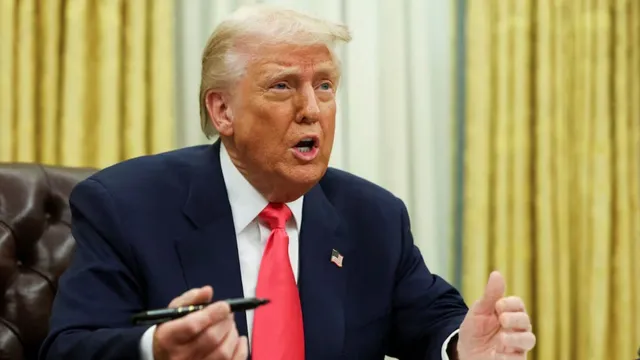- By Supratik Das
- Sat, 24 May 2025 10:07 AM (IST)
- Source:JND
In a stern warning to tech giants, US President Donald Trump has said that they can be subjected to tariffs of at least 25 per cent if they continue to produce iPhones in India and export them to the American market. Talking from the Oval Office on Friday during the signing of executive orders to increase nuclear power, Trump indicated he had explained to Apple CEO Tim Cook clearly that iPhones destined for the United States should be assembled in America, and not abroad." It would be more. It would also be Samsung and anybody who makes that product. Otherwise, it wouldn't be fair... When they build their plant here, there is no tariff. But, I had an understanding with him (Apple CEO Tim Cook) that he wouldn't be doing this. He said he is going to India to build plants, and I said it is okay to go to India, but you are not going to sell it here without tariffs... If they are going to sell iPhones in America, I want it to be built in the US." Trump said on Friday.
Trump's stance comes as Apple's production base in India grows, making it increasingly a strategic base for iPhone assembly. Apple has stepped up investments in local manufacturing through partners such as Foxconn and Wistron to diversify its supply chain and reduce dependence on China, and avoid supply chain bottlenecks. Just last week, Trump had said in Doha during his visit to the Middle East that he had told the Apple CEO not to build in India and instead build its manufacturing capacity in the US.
Made-In-India Iphones Still Win On Cost
Even if the United States levies a 25 per cent tariff on iPhones produced in India, the overall cost of production would remain much lower compared to making the devices in the US, as indicated by a Global Trade Research Initiative (GTRI) report. The GTRI report structures the value chain of a 1,000 USD iPhone, revealing that Apple captures the biggest share, approximately 450 USD per device for its software, brand, and design. Significant contributions come in at 80 USD from U.S. component manufacturers such as Qualcomm and Broadcom, $150 from Taiwan (largely for chips), 90 USD from South Korea (OLED displays and memory), and 85 USD from Japan (camera modules). Small components from Germany, Vietnam, and Malaysia add up to another 45 USD. By comparison, India and China each pay only around 30 USD per phone, below 3 per cent of the retail price.
Despite the imposition of a 25 per cent tariff on the Indian assembly portion costing 30 USD, the report points out that it would still be significantly cheaper than manufacturing in the US, where labour wages are considerably more expensive. In India, an assembly worker's wage is around 230 USD per month, whereas in the US, states such as California would cost Apple approximately 2,900 USD per month because of higher wages. Producing an iPhone in India would cost around 30 USD per unit, whereas 390 USD in the US. GTRI estimates that Apple would have its per-unit profit reduced from 450 USD to merely 60 USD. India's production-linked incentive (PLI) scheme also contributes to its appeal as a manufacturing hub.
Also read: Used An Apple Device? $95 Million Settlement Means You Could Get Paid; Here’s How To File Your Claim

